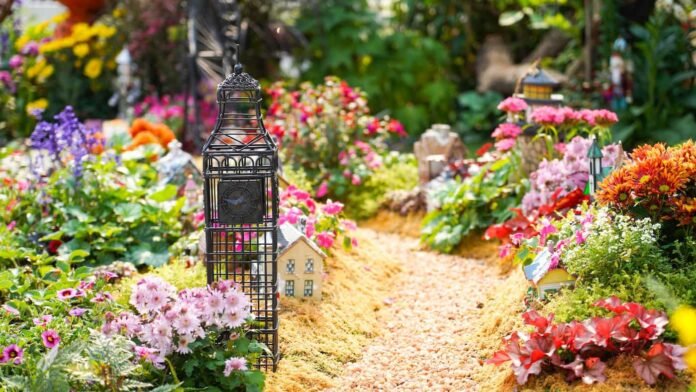It’s spring, and the world is waking up from its long winter slumber. You see the sun shining through the window and you want to get outside! But wait! We have some bad news: It’s not really time yet to plant your garden. There are still at least a few frosty nights left in this season, which means your plants will be lucky if they survive at all once they sprout up from the ground. So what do you do? Keep reading for our list of easy-to-maintain indoor plants that will keep your home looking beautiful—even when those last few frosty nights are upon us!
Hydrangea
The easiest plants to maintain in your garden include hydrangea, pachysandra and coniferous plants. Hydrangeas are also known as “Annabelle” or “Macrophylla” types of hydrangea. They are easy to care for because they do not need much attention. They will grow well if you take care of them properly throughout the year. You can cut back the stems during springtime or after bloom if you want more blooms later on. The best time to prune a hydrangea is right after its flowers fade away so that it will have plenty of energy left over to produce more blooms next season!
Zinnia
Zinnia is one of the easiest plants to cultivate in your garden. They grow well in full sun and thrive in pots and containers, making them an excellent choice for beginners who need a low-maintenance plant. Zinnia flowers are also beautiful cut flowers, so they can be used indoors or out to add color to your space!
Rosemary
Rosemary is a Mediterranean herb, and it’s easy to grow in pots. You can use rosemary in cooking or plant it as a houseplant. Rosemary needs full sun and well-drained soil, so give it plenty of space in your yard or garden bed. You’ll want to prune back the stems when they get too long, but don’t worry about pinching off flowers — there won’t be any!
Lavender
Lavender is easy to grow and can be grown in a pot or in the ground. This plant is hardy and will bloom all summer long. The flowers of this herb are highly fragrant, making it a great addition to your garden whether you’re growing it for beauty or cooking purposes. Lavender plants can be cut back after blooming, which encourages new growth and more blooms later on in the season.
It’s possible to grow lavender indoors as well: simply place your pot near a sunny window with bright indirect light for about six hours per day and give it plenty of water until roots have formed (about three months). Afterward, move the pot outside if desired—the cooler temperatures will cause less stress on the plant than direct sunlight would during hot summer days!
You may also find yourself using this herb medicinally; its essential oils are often used for their antibacterial properties or aid digestion when consumed orally (but please use caution with any supplements). If you have some extra time on your hands, try making your own DIY scented candles with fresh lavender buds instead!
Foxglove
Foxglove is a perennial plant that produces tall spikes of purple, pink or white flowers. Foxglove is a native plant to the United Kingdom and Ireland. It’s also very common as a garden plant in both countries. The flowers are very attractive to bees, butterflies and other pollinating insects, which helps ensure its survival as a species.
Foxglove is known for its striking appearance but it’s dangerous if ingested by people or pets because it contains digitalis—a heart stimulant used in medicine—so it should be kept away from children and pets who may accidentally eat some leaves or seeds (or get poked by the sharp thorns on the stems).
Hosta
Hostas
Hostas are a great choice if you’re looking for easy-to-maintain plants. These versatile plants can be grown in containers, shade gardens or sun gardens. Hostas are also hardy enough to grow in water or the ground so long as you provide the right soil and care. Because of their versatility, hostas are a great option if you want to experiment with different types of gardening methods like container gardening or raised bed gardening without worrying about killing your plant!
If you’re just starting out with your garden, hostas make great entry-level plants because they’re easy to care for but still add plenty of beauty and color where ever they grow!
Bleeding Heart
Bleeding heart
Bleeding hearts are some of the most beautiful plants you can grow, but they’re also among the easiest to maintain. They prefer moist, well-drained soil and full sun to partial shade, so make sure you choose a location accordingly.
Water regularly but don’t overdo it! These plants enjoy plenty of water during their growing season (spring through summer), but once leaves begin to yellow and die back in late summer or early fall, reduce watering to prevent overwatering. Prune away damaged or dead stems in late winter or early spring before new growth emerges. Deadhead regularly with sharp pruning shears to encourage more flowering.
Spruce
Spruce trees are coniferous, meaning they produce cones. They’re native to the Northern Hemisphere and grow best in cold climates. Spruce trees grow very quickly; an average spruce tree can reach a height of about 35 meters (115 feet) in as little as 20 years, making them ideal for use as windbreaks or screens. They also produce seeds which germinate in springtime when conditions are right for growth.
Conclusion
I hope that this article has helped you understand the basic things to keep in mind when growing these fantastic plants. If you have any questions, feel free to leave them below!



